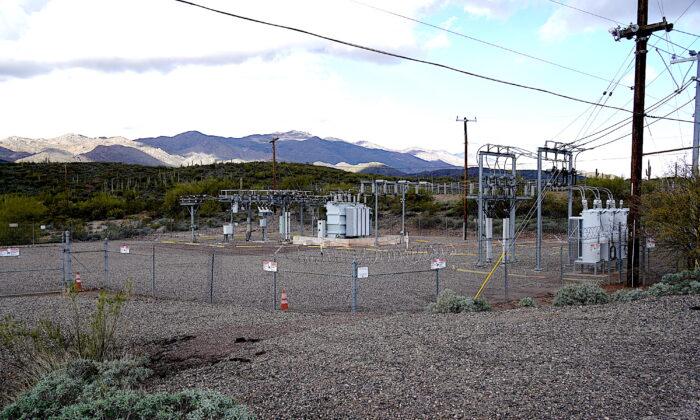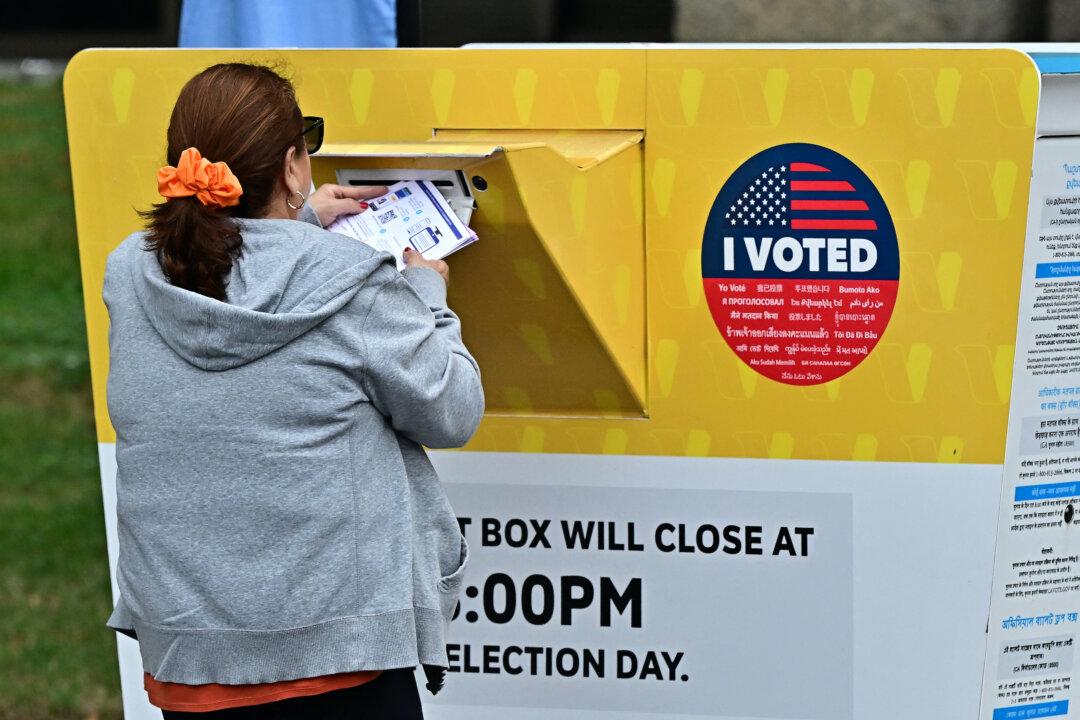The Biden administration has announced that it will funnel $1.3 billion toward creating three electrical transmission lines across six states to bolster the power grid in support of a national conversion to clean energy.
The lines will run from Nevada to Utah, from Arizona to New Mexico, and through New Hampshire and Vermont, and up into Canada.
The projects are expected to create more than 13,000 jobs and add 3.5 gigawatts of grid capacity throughout the United States—enough to power roughly 3 million homes.
“To realize the full benefit of the nation’s goal of 100 percent clean electricity by 2035, we need to more than double our grid capacity, and President Biden’s Investing in America agenda puts us in position to do just that,” Energy Secretary Jennifer Granholm said in an Oct. 30 statement.
“This historic effort to strengthen the nation’s transmission will drive down costs for American families and deliver thousands of good, paying jobs for American workers—helping communities keep the lights on in the face of climate change-induced extreme weather events,” Ms. Granholm added.
Contracts for the work will be negotiated through the Department of Energy’s Transmission Facilitation Program, with the Southwestern lines set to start construction in early 2025. Construction on the New England line is projected to begin in late 2026.
Upgrading the Grid
The new finance follows the administration’s announcement last week of a $3.5 billion investment in 58 projects across 44 states to strengthen the nation’s electric grid resilience and reliability.That investment, according to Ms. Granholm, marked the largest-ever federal investment in grid infrastructure, supporting projects that will harden electric systems and improve energy reliability and affordability.
Combined with funds from private partners, the spending could yield up to $8 billion in investments to upgrade the grid, she added.
“The grid, as it currently sits, is not equipped to handle all the new demand,” Ms. Granholm told reporters on a call. And natural disasters and extreme weather events, she added, have only exacerbated the problem.
“We need it to be bigger, we need it to be stronger, we need it to be smarter.”
The projects announced on Oct. 18—funded by the federal Grid Resilience and Innovation Partnerships program—are expected to add an additional 35 gigawatts of power to the grid.
Their focus will be on advancing renewable energy sources like wind and solar while fixing problems that could contribute to wildfires and other disasters.
Climate Change or Negligence?
Democrats have attributed extreme weather events—like the devastating wildfires that recently killed 97 people in Hawaii—to the impacts of climate change. Such incidents, they say, are one of the primary reasons a full conversion to renewable energy is necessary.Republicans, however, have said a lack of proper fire mitigation practices has created the perfect environment for wildfires to spread.
In the case of the Maui wildfires, Hawaiian Electric has since acknowledged that downed power lines appear to have sparked the initial fire, though the utility has faced additional scrutiny over its fire prevention protocols.
Meanwhile, during that same period, Hawaiian Electric dived into the transition to renewable energy that was mandated by the state in 2015.
“There was so much pressure on the electric company from officials both locally in Hawaii, but also the federal government, to chase down renewable energy,” he said.
“They weren’t paying attention to the basic things, like making sure that you don’t have limbs touching power lines and that you actually clear out the underbrush so that the fuel for a fire, which is fresh wood and other things like that, is not laying around to catch fire and nearly burn down an area.
“I’ll tell you this: This is much more after [a] man-made disaster, what happened in Maui, than being caused by the planet,” he added.







